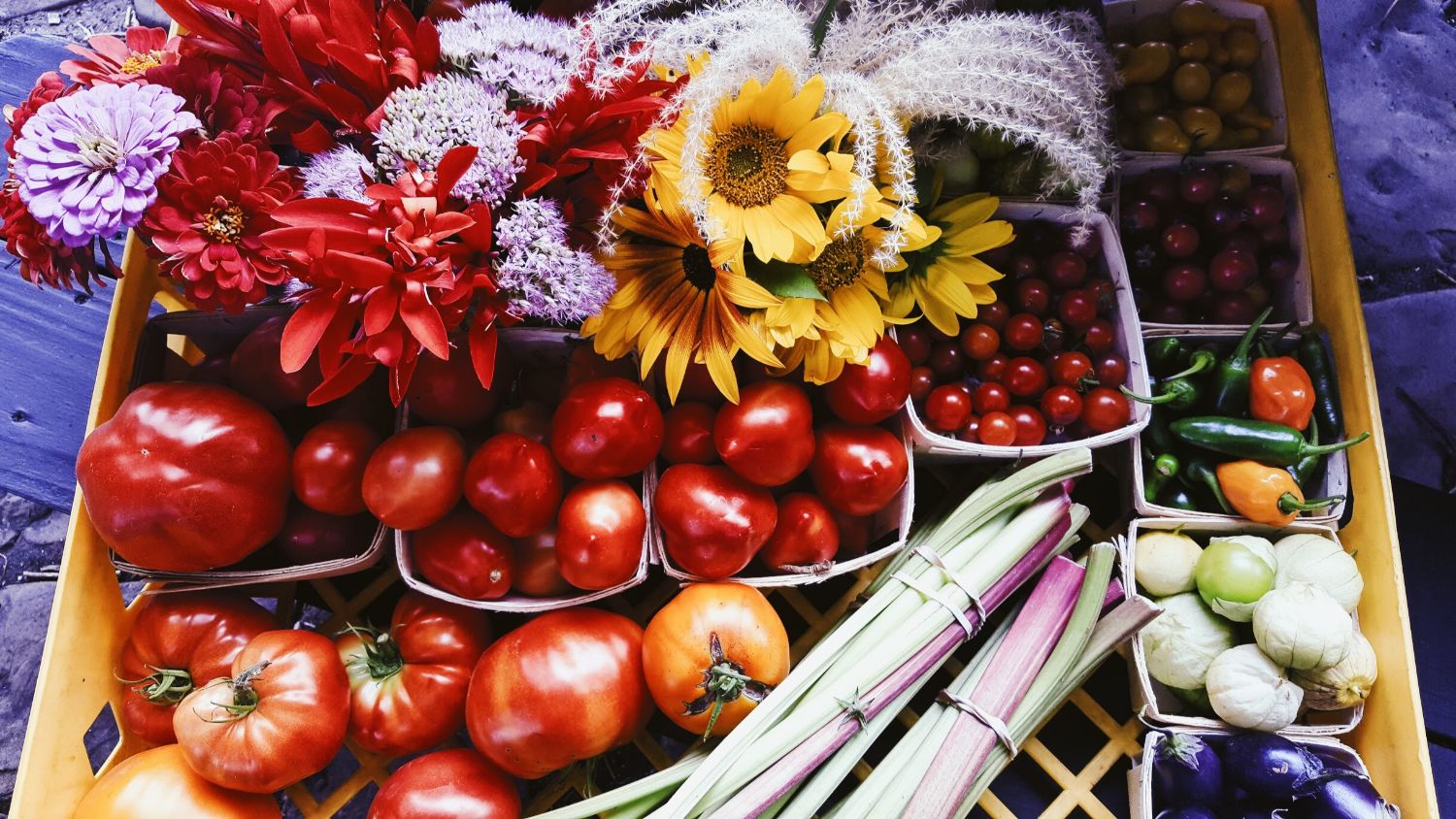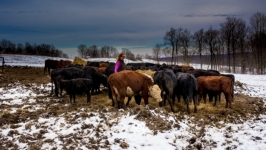The Sisters of St. Joseph Neighborhood Network plants the seeds of Erie’s revival
To revive a struggling neighborhood, you can convene committees, hire consultants and otherwise brainstorm your way toward fighting blight.
Or you can plant gardens. Involve the neighbors. And change the very landscape of possibility.
That’s what the Sisters of St. Joseph Neighborhood Network (SSJNN) has done in Erie’s Little Italy, a westside neighborhood whose light was fading.
That is, until a decade ago, when SSJNN and volunteers established the International Flavors community garden. Their urban farming footprint now includes eight plots in Erie, two of which are orchards and one—Namaste Garden—that’s run by new American families growing many crops from their homelands.
But their headliner is surely the Little Italy Farmers’ Market, started in 2012 through the dedication of Peace by Piece Farm, Sue Moyer and Rose Graham of SSJNN and initial sponsorships from Country Fair and Fluid Engineering.
Thanks to local business donors, the market has offered SNAP (or Supplemental Nutrition Assistance Program, formerly food stamps) Match since its inception, and enabled customers using SNAP benefits and Farmers’ Market Nutrition Program (FMNP) vouchers to make produce a priority.
“From what we’ve seen, [SNAP Match] definitely works,” says SSJNN Westside Neighborhood Manager Gretchen Gallagher Durney. “When people are able to buy lots of good food here, they won’t buy chips or something unhealthy elsewhere.”
The market officially opened in 2013 outside of St. Paul’s Church, then moved to its current location on West 18th Street a few years ago. It attracts a wonderful mix of people, Durney says—neighbors and commuters of varying means.
“Every year we hear about families stopping [by] who didn’t know about it before; or seniors who love coming out, even if they’re in a wheelchair or typically homebound,” she adds. “They love buying their own things to cook, and interacting with farmers to learn about the produce, how it’s grown or how to use it.
“We started out because this is a food desert,” she continues. “But increasingly, it serves our larger mission of revitalization—supporting local ventures and bringing the community together. Social and educational opportunities are a huge reason why people come to the market, with children or on their own. These factors are as important as the great food and healthy eating.”
Monthly event days highlight the market’s complementary charms. The last Monday of each month features live music, kids’ activities, additional vendors and artisans and—importantly—educational activities about produce.
“We’ll have people who come on the first market day in June and ask, ‘Where are the tomatoes?’ Or, ‘When are you going to have avocados or bananas?’” Durney says of shoppers who don’t realize that farmers’ markets offer only what is in season and grown locally. Surely, educating a public so commonly disconnected from our food’s origin is part of any market farmer’s job.
But with their teen worker program, the SSJNN has taken that mission further. Neighborhood teens are paid above minimum wage, mentored throughout their employment and given empowering work, such as running the market stand where they sell produce from their own urban farm.
“They get great experience working the market booth,” Durney says. “The teen workers pick market produce that same day, so it’s very fresh. And they’re directly involved in the whole process of post-harvest handling.”
Durney says the program lets neighborhood teens experience the pride and self-esteem that come from earning a paycheck—without the fear that they’ll be fired for any mistakes. They can be as young as 14, and it’s often their first job, so a major emphasis is placed on learning soft skills that will serve them well regardless of where they’re employed in the future.
“Many now work at restaurants, or for landscaping businesses—it doesn’t matter to us what job they’re going on to. Maybe they decide gardening isn’t for them. But they learn work ethic, and it’s really rewarding when we see them move on to other jobs.”
Currently, SSJNN receives more applicants than they can fund. But even those who aren’t hired gain a better understanding of the employment process, including interviewing.
And those selected to work as market gardeners learn how to grow and use truly fresh produce—an immediately useful skill they can teach to others.
“It’s all about making [healthy food preparation] easy and exciting for people, and not a hurdle—like, ‘I have to follow this recipe’ or ‘I have to do this with tomatoes,’” Durney explains. “Having that extra motivation—especially if people are living in unique and stressful situations, economically or otherwise—well, how would you find the motivation to cook in that situation? You have to make it easy and appealing.”
That’s certainly not a problem for Alkeme Mediterranean Café, which buys produce from the SSJNN gardens such as salad mix, fruit in season and herbs. The partnership is especially helpful since it provides a sales outlet before and after market season.
Undoubtedly, whether on Alkeme’s menu or at the market itself, SSJNN’s efforts are broadening Erieites’ perceptions of food, cooking and each other.
“At a market last September, there was a little boy who had come with a couple of siblings and his mother, and a farmer gave him an apple to try,” Durney recalls. “He finished it off, then looked at the seeds and was pulling them out of the core. Then he came up to me and a couple of others and said, ‘Here—I want you to save these, because then more people will be able to have apple trees and apples.’ He was maybe 7—but when things like that happen, I think, ‘Aha! They’re seeing what’s going on!’”
OK, so that boy hasn’t quite mastered apple tree propagation. But thanks to SSJNN’s growing work, one day he could—right in his own backyard.
“It’s a miracle of revitalization,” summarizes Sr. Phyllis Hilbert. “It really has brought life and beauty to the neighborhood, and provided hope, when things looked pretty glum. It certainly did for me, and I know it has for many neighbors, who say, ‘Thank you for creating this beautiful spot.’”












